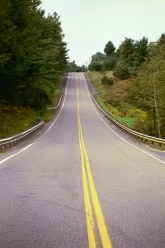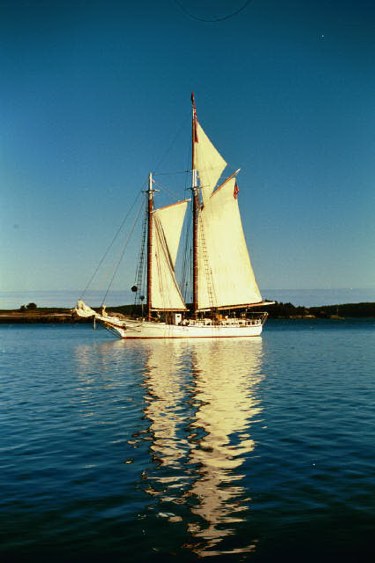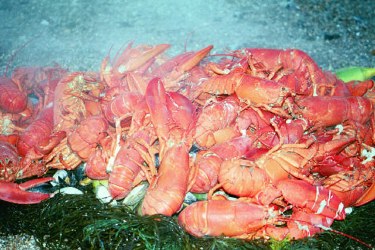TRAVEL HANDBOOK NEW ENGLAND
HOME | AMERICA ON WOODEN SHOES | SERVICES | LINKS | ABOUT MY BOOKS | PROMOTE YOURSELF | CONTACT ME | LANGUAGE SWITCH

AMERICA ON WOODEN SHOES
As I wrote before, the first primary destination during my trip through New England was the Maine coast. Better said: it was the town of Rockland, a busy fishing village where my girl-friend and I (as well as 20 other guests) embarked on the schooner Isaac H. Evans. Owner and Captain Brenda G. Walker, also on behalf of the other crew members Megan, Carrie and Nathaniel, welcomed us on board. She showed us our cabin, conducted a short tour of the ship and informed us about the provisions on board of this wooden sail boat which was build in 1886.

Schooner Isaac H. Evans
For a week we sailed with the Isaac H. Evans along the rugged coast of Maine without any concrete travel plans, as Captain Brenda stated emphatically at the start of the trip. Nobody expressed any concerns about that, but after a few days, people started to wonder about the destination at the end of the day. Not because anyone doubted the capability of Captain Brenda and feared whether the boat was sailing in the direction of Iceland, but because the supply of liquor needed replenishment. Therefor, anchoring the boat near a village proved satisfactory to most passengers.
Sailing without any specific target contributes heavily to the complete loss of several conceptions which are normally an important ingredient of daily life: realization of time and place. After only a few days of floating in the fresh sea-air, most of the passengers left their watches in the cabins. The sun and the ship bell took over the tasks of the timepieces. Even seasoned night-revellers turned in before 10 o'clock with the exception of the night of the full moon when Captain Brenda treated us to a night-sail. Well before the ringing of the bell for breakfast, most everybody was usually on deck; a mug with hot coffee between both hands to keep warm in the chilly morning air.
The Isaac H. Evans is member of the Maine Windjammer Association, a fleet consisting of 13 traditional tall ships, ranging in size from 64 to 132 feet on deck. Some of the ships have been build specifically for the windjamming trade as this kind of sailing for tourists came to be known, but most of them are original schooners dating back to the second half of the 19th or the first half of the 20th century. Invented in America in the 1700s, schooners were easily handled by a small crew. They were fast and served America's economy for two hundred years, transporting granite, ice and other cargo.
The Isaac H. Evans was built in 1886 in New Jersey and served for 85 years in the Delaware Bay as an oyster boat. Because the Evans remained basically in original condition (it is one of the few vessels in the fleet without an engine and is, with the exception of some support by a motor sloop, entirely dependent upon sails) the ship was designated a National Historic Landmark.
Accommodations on board of a windjammer are good, but simple, consisting of single, double and triple cabins. The size of those cabins (and specially the height) asks for improvisation skills and adaptability from the passengers, but is more than sufficient. A small basin with hot and cold running water is present and on deck there are bathrooms and a cabin for showers, shared by all the passengers.
To be honest, the simple provisions fits perfectly in the sphere of cruises like these. Just as the joint meals, which are enjoyed on deck weather permitting. When the weather is not very pleasant, there is (more or less) room for all the passengers in the galley. The meals are prepared by the crew and are good. The smell of freshly baked bread and cookies coming from the galley is one of the many pleasant memories I shall hold about the cruise. Similarly, I also look back with much pleasure to the 'lobster-bake' which was featured during the trip.

For the lobster-bake our boat dropped anchor in a cove of an uninhabited island. With the sloops, the passengers were brought ashore, where the crew built a camp fire on the beach using dead wood. On top of the fire a huge pan was placed, filled with sea-water. As soon as the water was boiling, a large number of lobsters went in and the pan was covered with seaweed. By the time the passengers came back from their exploration of the island, it was dinner time.
The pan, to which clams, mussels and corn-on-the-cob were added as well, was turned over on the beach, revealing the fiery red Maine-lobsters.

With a plate full of mussels, clams, corn and lobster everyone found a rock to sit on. Bottles of wine and 'champagne' were uncorked. Flames of the fire lighted the beach. Full of delight everybody attacked the steamy hot lobsters. Fairly quickly, I helped myself to a second helping of the mouthwatering seafood. There were more then enough lobsters for those who wanted to get a third or even a fourth one. Despite the devine taste two were the limit for me.

Wooden Boat Sail-In, Brooklin, Maine
The entire cruise took place in the vast Penobscot Bay, which is characterized by the presence of more than 3,000 (inhabited and uninhabited) islands. Except for the buying of fresh lobsters at the fish auction in Stonington and the replenishment of beer, wine and ice at Bear Harbor, we only visited one other harbor during the week of the cruise: that of Brooklin where that day the Wooden Boat Sail-In was organized. This event is a gathering of all the tall ships of the Maine Windjammer Association. A local steelband took care of the upbeat music and hungry stomachs could be filled with steamed mussels.
For more information about three and six-day trips with so-called 'tall ships', you can contact the Maine Windjammer Association, web site www.sailmainecoast.com, e-mail windjam@acadia.net, phone 1-800-807-9463. By mail: PO Box 1144, Blue Hill, ME 04614. Three to six-day cruises range from $350 to $835 per passenger, all meals included.